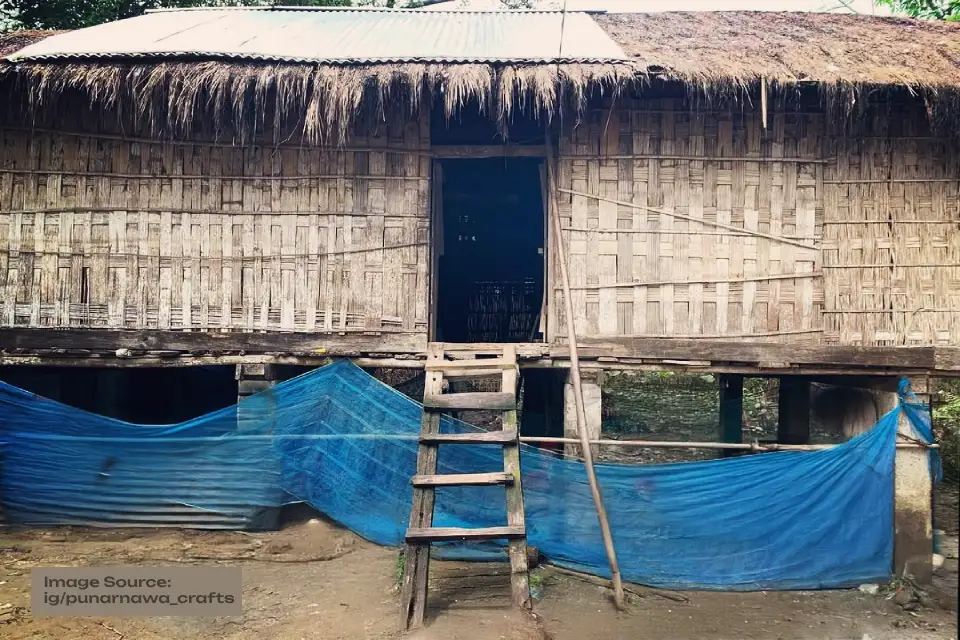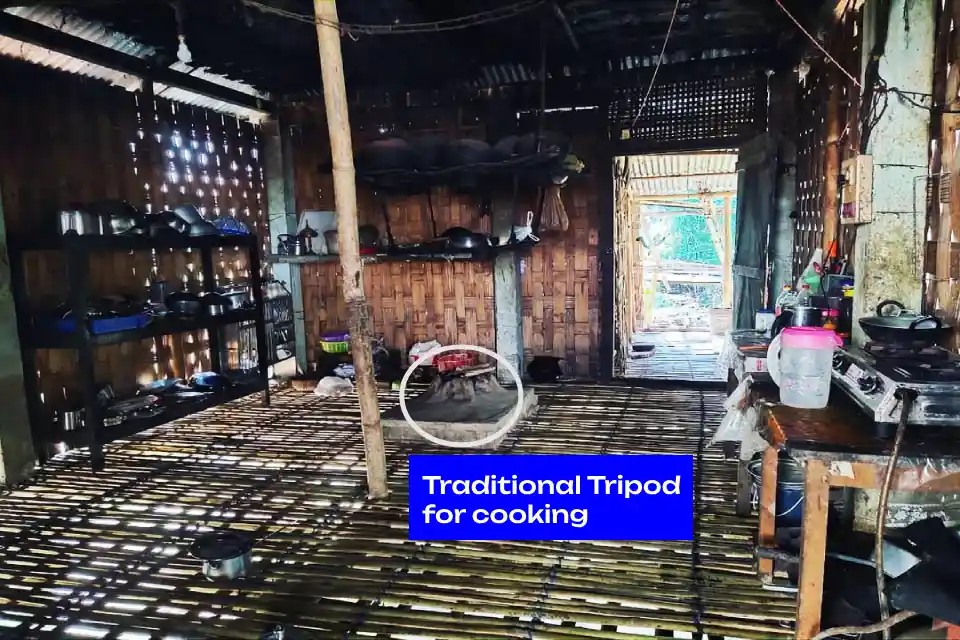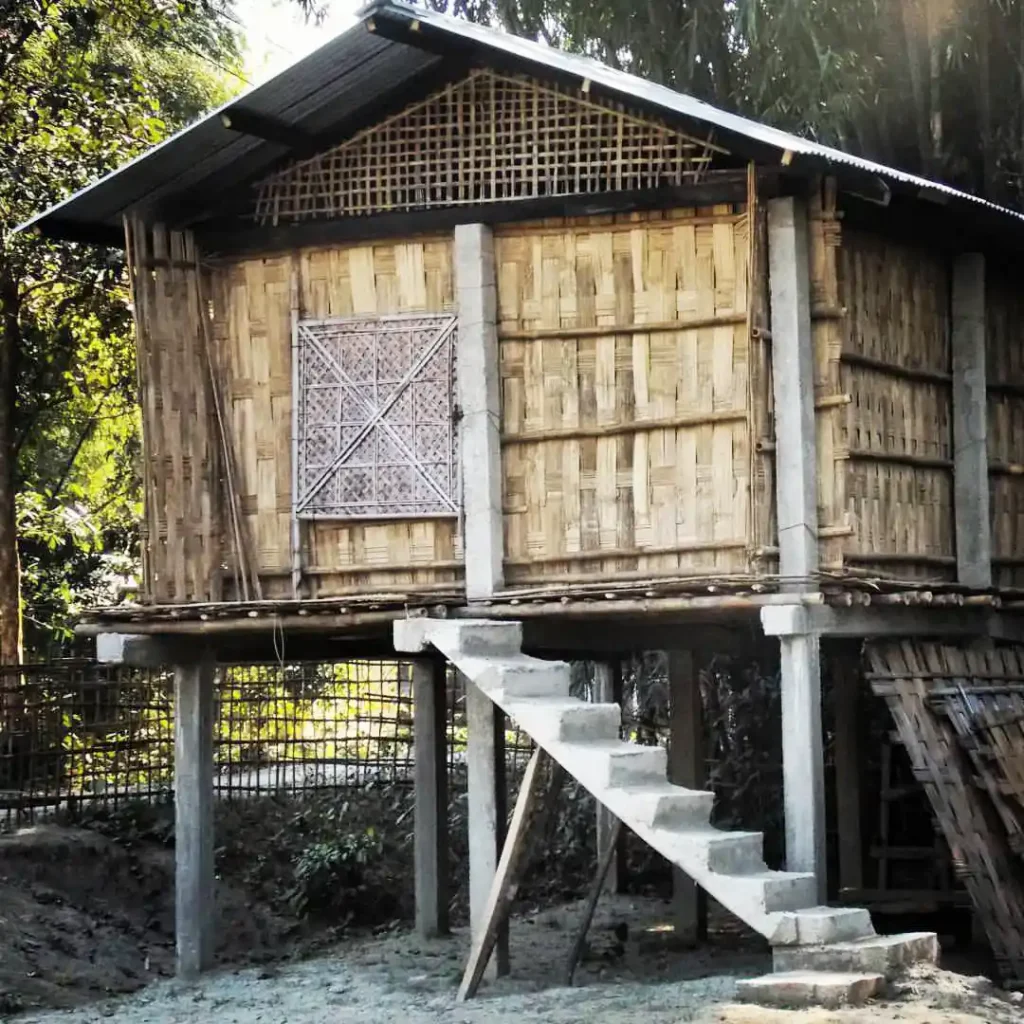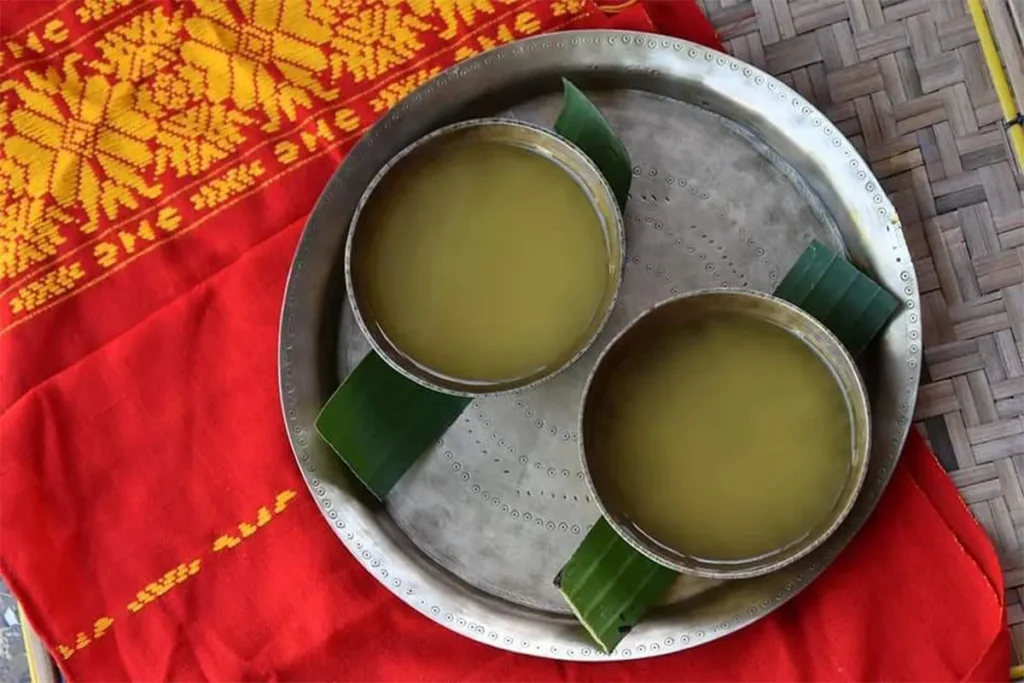Let’s explore the rare Chang ghar of Assam, a unique architectural shelter that is not only practical and innovative but also a sustainable housing solution.
Diversity Assam
Updated on :
Share this post
An ode to simple lifestyle that gives shelter from natural calamities like floods, Chang Ghar has been an innovative shelter for villagers for a long time. A multipurpose cabin to sustain life and livestock is now a rare thing to find. Chang Ghar is an example of the architectural brilliance of the rural communities, how they use the naturally available resources to sustain a simple and balanced lifestyle.
In the era of skyscrapers and luxurious homes, these stilt houses stand tall as the best kind of sustainable approach towards the conservation of the environment as well as a unique architecture not seen much around the world.

Image: A real Chang Ghar (house) of a Mishing family
What is Chang Ghar ?
The Mishing people in Assam use Chang Ghar, a unique survival technique, to deal with flooding and offer shelter to the village regions. It’s a bamboo stilt house, also known as a stilt house. These towering bamboo homes have two uses: people reside in the upper floor while the space underneath is utilized for poultry and livestock. It includes a balcony, perforated rooms, and the stove is set up on a wooden plank filled with sand and three bricks arranged in a triangular manner to support the cooking pot.

Mishing lifestyle
Their lives are in perfect harmony with the Brahmaputra’s ever-changing rivers, as they are river people. Mising, the state’s second-largest tribe, are among the most severely impacted because of their settlement along the banks of the Brahmaputra River and its tributaries. Their distinctive and customary flood-resistant homes, known as Chang Ghar, enable them to survive.
Architectural design
The pattern of the house is simply like the letter ‘I.’ To reach the elevated entrance of the house, one must climb a wooden ladder known locally as a Jokhola. This ladder is composed of bamboo or timber and is supported either by cemented pillars or stilts for stability.
Because bamboo is lightweight, flexible, and abundant in Assam’s forests, it is utilized to construct the majority of the Chang Ghar, including the walls and floor. Thatch is used to make roofs. For better ventilation, the bamboo floors and walls are perforated.
Additionally, it is renowned for having a natural resistance to weather and pests, which makes it a top option for sustainable building techniques. Their construction relies heavily on locally available materials like bamboo, wood, and ikora (reed), which makes them both economically and environmentally sustainable for the people.
A Traditional Coping Mechanism
Chang ghar are resilient homes made with locally accessible materials, and they are traditional examples of adaptability. The most recent flood water level affects the houses’ elevation; the higher the flood level, the higher the houses are.
Additionally, this design improves air circulation, which helps to keep the living area cooler during the scorching summer months in Assam. The buildings are robust to earthquakes and floods because they are constructed with lightweight materials on stilts.
Modern advancements

As the lifestyle of rural people is improving and they are adapting to modern technologies, the architecture of chang ghar has seen some significant changes. The Mishing people have migrated to different places far from the riverbanks and started settlements in plains and villages, but their housing structure remains the same with just some modifications.
The pillars are made of cement these days as the problem of flooding is not much prevalent, and also to provide more support. With the growing technological advancements, the requirement of furniture and appliances is also increasing; therefore, the floors are sometimes made of wood for firm support.
Step Towards Sustainability
The sustainable practices of Chang ghar can be influenced by the materials chosen for their construction. The environmental impact of stilt houses can be reduced before, during, and following construction. Furthermore, they are easily constructed without significantly impacting the surrounding environment.
Chang ghar provides a special fusion of practical advantages and cultural importance. These raised structures offer a robust and sustainable living option, with benefits including enhanced ventilation, pest management, and protection against flooding.

